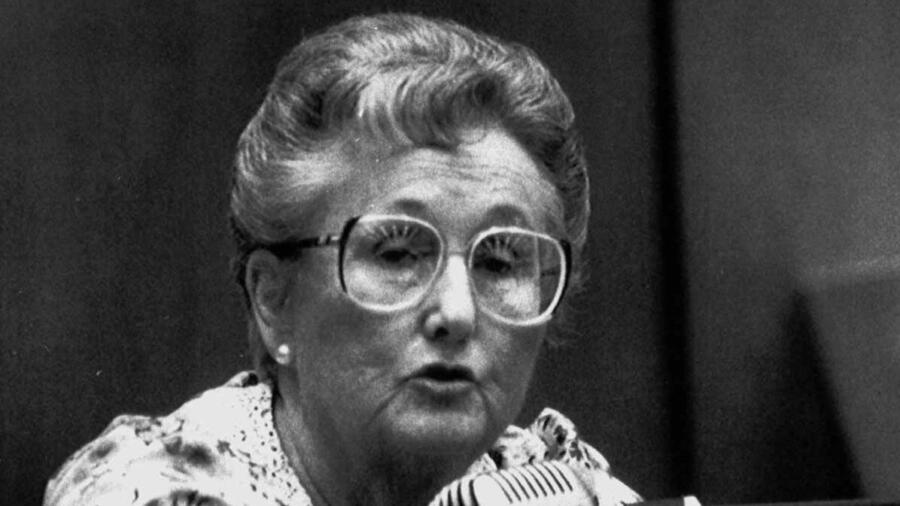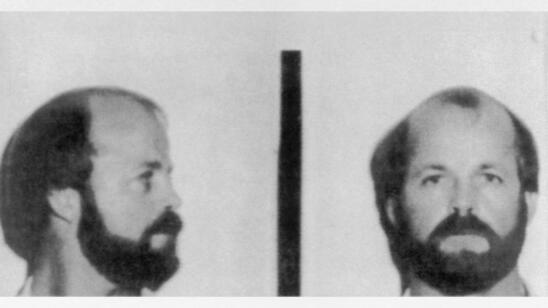In the 1980s, allegations of ritualized child sexual abuse were made against multiple preschool and daycare workers across the United States. In the McMartin preschool case (1983-90), hundreds of children at the school, located in Manhattan Beach, California, close to Los Angeles, described being abused, at times during Satanic rites, in response to suggestive questions.
Seven teachers were indicted amid a firestorm of parental panic and media interest. Only two went to trial, and no one was convicted.
A&E True Crime explores what spurred the case, the trial itself and the aftermath.
What Led Up to the McMartin Case
In August 1983, Judy Johnson told police in Manhattan Beach, California, that doctors believed her 2-year-old son had been sodomized. According to Johnson, her son had said “Mister Ray” was responsible. Ray Buckey was part of the staff at the Virginia McMartin preschool, which Johnson’s son attended.
Buckey was arrested on September 7, 1983. The following day, Manhattan Beach police sent 200 letters to families of McMartin students. The letter mentioned child molestation and directed parents to, “Please question your child to see if he or she has been a witness to any crime or if he or she has been a victim.”
[Stream episodes of American Justice in the A&E app.]
Ray Buckey was named in the letter. Susan Moran, a criminal defense attorney and professor at Case Western University’s School of Law, tells A&E True Crime, “When you send a letter out like that, naming the alleged individual, you’ve already tainted that investigation.” Moran adds, “These parents are ill-equipped with the proper questioning methods, and you’re now going to have corrupt responses.”
After this letter was sent out, hundreds of former or current McMartin students went to Children’s Institute International (CII), a Los Angeles children’s therapy center. Social worker Kee MacFarlane did most of the interviews with these children.
It was later determined that during the CII interviews, which were videotaped, children were asked leading questions, such as “Can you remember the naked pictures?” They were told that other kids had already shared “yucky” secrets, so they needed to speak up. A child who denied abuse was called a “scaredy cat.”
Children ended up talking about playing games like “Naked Movie Star,” or being abused in tunnels under the school. They also stated they’d visited local businesses and been assaulted there. In some accounts, they said their teachers had killed rabbits and turtles to intimidate them.
Testimony from the young students also ended up linking the case to growing nationwide fears about Satanism. A child talked of a baby being sacrificed in a church. Another student said he’d been taken to a graveyard, where he helped unearth a coffin and saw a body that was then cut with knives. Interviews also mentioned the preschool teachers flying in the air while dressed as witches.
Details about the CII interviews were broadcast on a local station in February 1984. This sparked intense interest that would last for the duration of the case.
The McMartin Trial Begins
CII eventually interviewed 400 students and concluded that about 360 children had been abused. Six McMartin teachers were alleged to have been involved. In addition to Ray Buckey, his mother, Peggy McMartin Buckey, and his sister, Peggy Ann Buckey, three female teachers were also accused. CII staff believed the teachers were running a pornography ring, a claim prosecutors would adopt as well.
Parents and other advocates were determined to “believe the children“—which became their slogan—even when evidence didn’t back up their claims. Investigators did not find tunnels under the preschool, or bones from slaughtered animals. The FBI and Interpol could not locate any traces of pornography that the defendants had allegedly been making.
However, a task force to assist Manhattan Beach police was only formed eight months into the investigation. Some skeptics thought enough time had elapsed that potential evidence might have been destroyed.
In March 1984, a Los Angeles County grand jury handed down indictments against Ray Buckey, his mother and sister, and the three other teachers. The grand jury also indicted 76-year-old Virginia McMartin, founder of the preschool and Buckey’s grandmother—though prosecutors had not asked for her to be charged.
A preliminary hearing began for the seven defendants in April 1984 on a total of 208 counts of sexual abuse and conspiracy. The group, dubbed the “McMartin Seven” by some news outlets, were ordered to trial in January 1986. A week later, a new district attorney cited “incredibly weak evidence” and dropped charges against everyone except Ray Buckey and his mother.
Judy Johnson, who’d gone to the police in August 1983 with the claim her child was sodomized at the school and who put in motion the school’s investigation, was diagnosed with paranoid schizophrenia in 1985. Defense counsel was not made aware of this. Johnson died in December 1986 from alcohol-related liver disease.
The trial of Buckey and McMartin Buckey began in April 1987. On January 18, 1990, they were found not guilty on 52 counts. The jury deadlocked on 12 molestation charges against Buckey and one count of conspiracy against both Buckey and McMartin Buckey and the judge declared a mistrial. The judge then dismissed the one conspiracy charge faced by McMartin Buckey but facing parental pressure, prosecutors opted to try Buckey again later on eight of the deadlocked counts. The second trial ended on July 27,1990 with another deadlocked jury. Soon afterward, the prosecutor said Buckey would not be tried again.
The investigations and trials had taken seven years and cost more than $15 million. It was, and currently remains, the longest and most expensive criminal trial in American history.
The Aftermath of the McMartin Case
In addition to the McMartin case, other preschool and daycare workers in the U.S. were accused of sexually abusing children in the 1980s. Many of the allegations included charges of ritualized abuse amid Satanic practices.
One staff member from a different school near McMartin was tried, but the case ended with a hung jury. Other daycare workers faced charges in New Jersey and North Carolina. Any convictions were eventually overturned.
Many parents of McMartin students remained convinced their children had been abused. In 1990, some hired an archaeologist to look for tunnels beneath the preschool, since tunnels had been mentioned by some children as a place where some abuse took place. A report issued by the archaeologist in 1993 stated the tunnels existed. However, another expert reviewed this report and concluded the tunnels were actually trash pits from years past.
Lindsay Malloy, a professor of forensic psychology at Ontario Tech University tells A&E True Crime, “A lot of these accounts were quite compelling and the children were providing details. If you saw your kid testifying, or claiming that these things happened, it would be really hard to get past that.”
A McMartin student, Kyle Zirpolo, spoke out in 2005 saying he had lied about being abused. He explained his confession had resulted from the pressures he’d experienced in interviews. “There were so many kids saying all these things happened that you didn’t want to be the one who said nothing did,” he said. He also acknowledged his mother was still convinced abuse had taken place.
Though he was eventually freed, Ray Buckey spent five years in prison before being released on bail. His mother spent nearly two years in prison.
The techniques used to interview McMartin students have been studied and analyzed, leading to insights about the best way to interview children.
Malloy says, “We have a lot more awareness now about suggestibility, and about the fact that you have to be very careful when you are collecting memory evidence, especially from vulnerable populations like kids.”
Related Features:
Behind the Scenes of a Real-Life Special Victims Unit
Was a History of Abuse to Blame for Louise Turpin’s Shocking Treatment of Her Kids?
How Did USA Gymnastics Doctor Larry Nassar Get Away with So Much Sexual Abuse?


